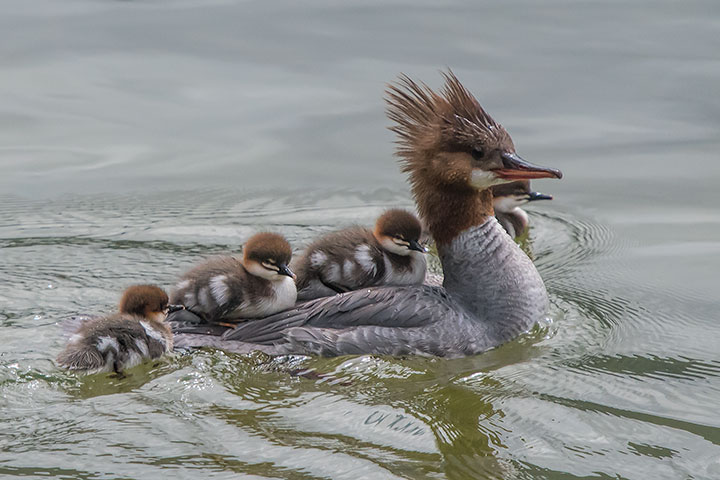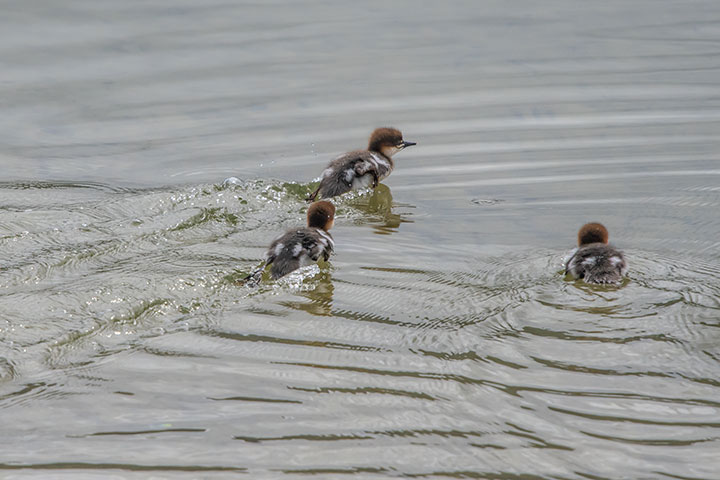Who can resist the sight of mommy duck parading her ducklings across the water? It is especially cute when the chicks hitch a ride on mommy’s back, as merganser chicks do.
However, this is not the only neat behaviour that these merganser chicks exhibit. In addition to hitching a ride, chicks both draft and plane.
Merganser chicks ride on mommy’s back as a way to keep pace with her swimming.

While some of the chicks are hitching a ride on mommy, many of them are following behind in the water. Keeping pace with mommy in free swimming is a problem for, due to their lesser length, the chicks have a lower hull speed. The solution is to draft mommy. By travelling in a group behind her, water resistance is lowered and they can keep up.

There is another way the chicks can keep up with mommy: They can plane. This is another method of getting around the problem of the speed limit imposed by their hull speed.
At a speed somewhat below the swimmer’s hull speed, the swimmer is in displacement mode, where support is (primarily) a result of buoyancy. When planing, support is (primarily) provided by the rush of the water against the tipped-up hull. However, to attain this new state requires considerable energy (as any pleasure boater will confirm).
It is true that owing to a lower threshold speed, planing is easier the smaller you are (chicks are better at it than adults), but it is also the case that a particular hull configuration is needed. In displacement mode, a rounded stern (for a boat) or butt (for a bird) is desirable: In planing mode a sharp underwater transition between the hull and transom is necessary. A bird normally has a rounded butt, so how does it make the sharp underwater transition it needs to be able to plane? Answer: It forces its tail feathers down into the water.
This picture shows two merganser chicks in planing mode (left) and one in displacement mode (right). The chick on the right has its tail feathers lying along (slightly above) the water surface. The two chicks on the left have forced their tail feathers as deeply as they can into the lake. Also the wakes look different whether the swimmer is in displacement or planing mode.

This image shows all three behaviours. There are chicks that solve the problem of the speed mismatch by riding on mommy’s back. There are also chicks that are keeping pace by drafting mommy. Finally, three chicks (upper left, centre, lower centre) are planing.


Alistair, I don’t know that I have ever commented before, but I really do love seeing your entries in my in box. I always learn something, and I get to see a view of nature that most of us miss out on. Thank you.
Magnificent photos. Thanks so much for the lesson also. I knew about “drafting” and, in fact, taught my granddaughters about that on my way back from Michigan. I “drafted” an 18 wheeler. Saved a bunch of gas. Thanks again! Love your photos!
Thanks again for those absolutely great pictures. The other day my daughter drew my attention to a lone wee merganser chick “planing,” at great speed across the lake.
Now it is all made clear. Do hope our lone wee one found his family though. Thanks again.